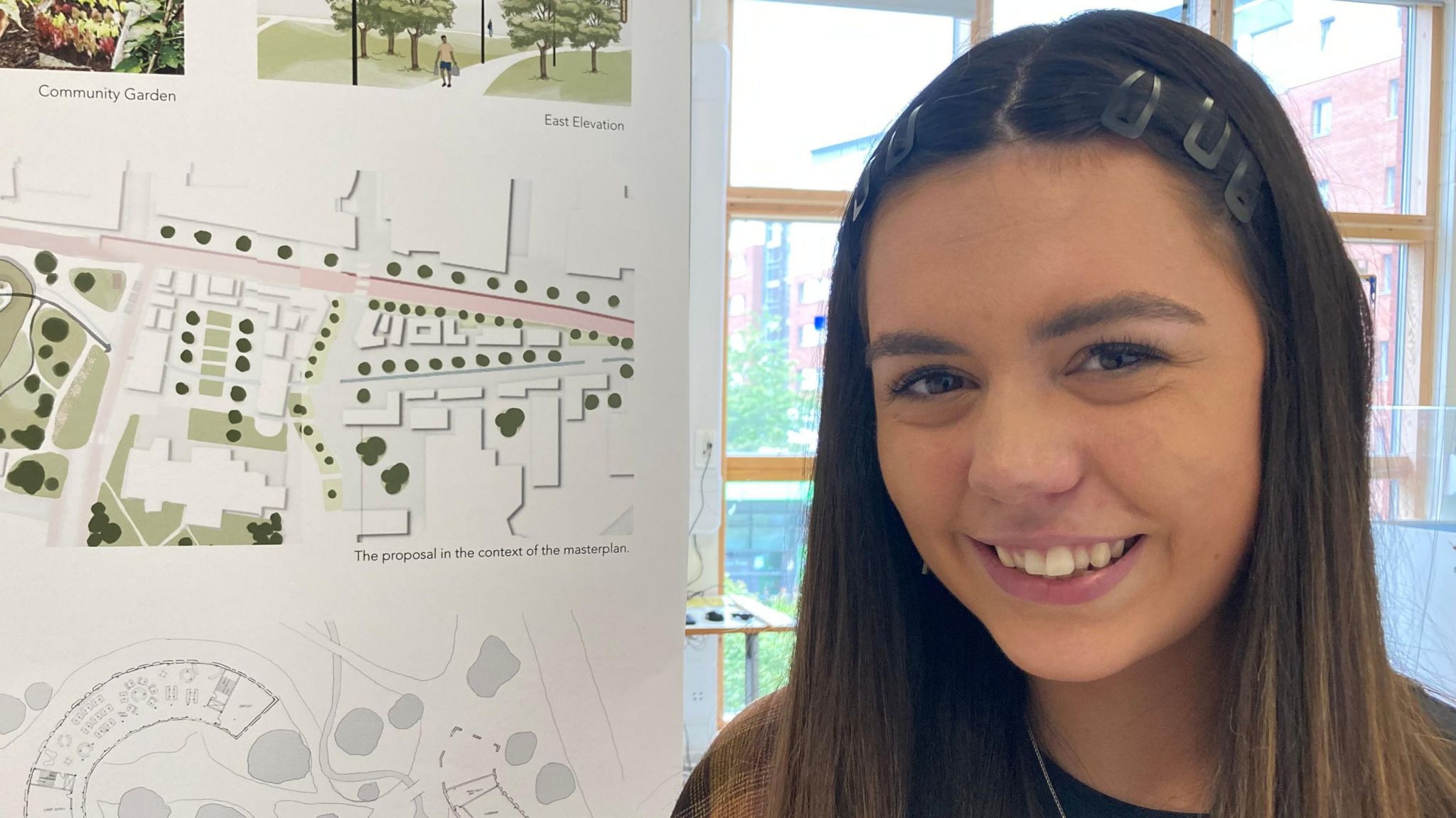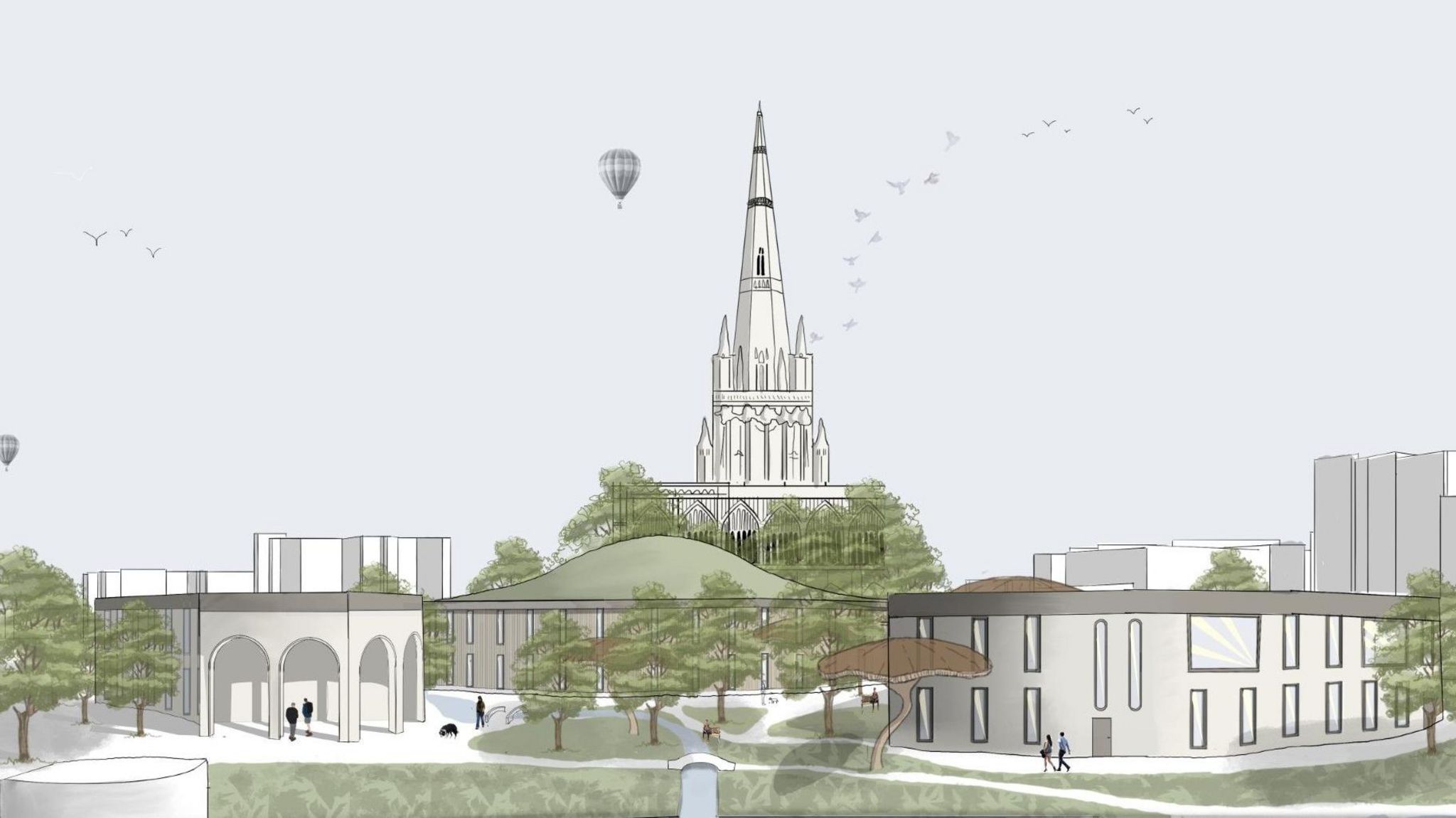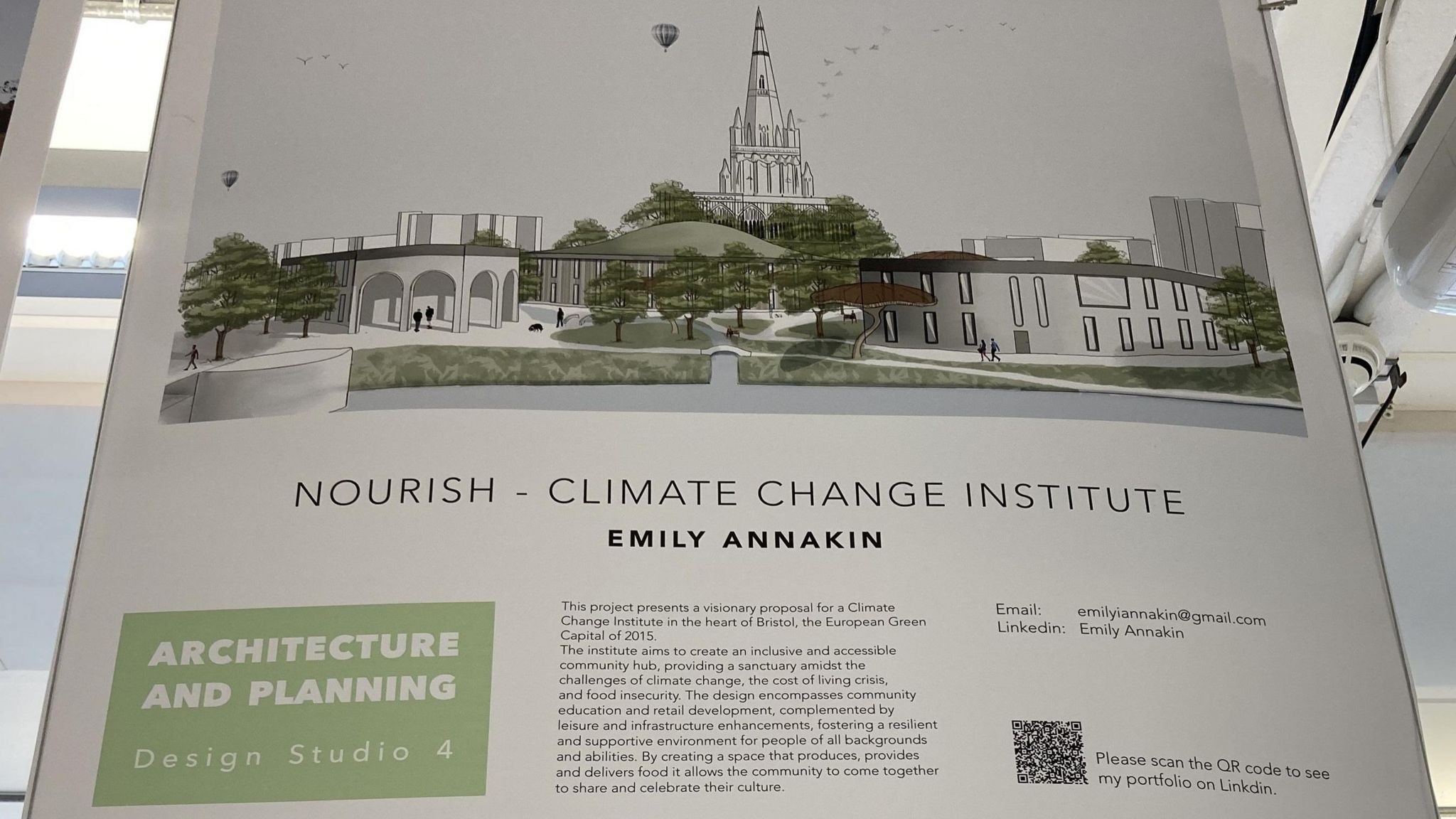
Emily Annakin is an architecture and design student and has re-designed part of Bristol Harbourside
- An architecture student who has lost most of her sight has said it "inspired" her to design urban spaces which are more accessible for all.
Emily Annakin, a 23-year-old UWE Bristol Architecture and Planning student, has Stargardt disease, a form of juvenile macular degeneration which means she has no central vision.
As part of her final degree course, she has redesigned part of Bristol Harbourside.
"Losing most of my sight has given me a different perspective and I want to use that to create a more inclusive and accessible urban space," she said.
Ms Annakin, who is from Wolverhampton, is about to graduate after completing five years of study, including a four-year dual Architect and Planning degree at UWE Bristol and a foundation year.

Emily Annakin uses computers and other devices to make digital drawings because her eye sight has deteriorated
For her final degree project, she used the experience of being visually impaired to design "a more welcoming" urban environment based on all the senses.
It included adding a stream running adjacent to Bristol Harbourside to enhance auditory senses.
“Everyone experiences space differently, whether you have a visual impairment or physical impairment, whether you’re neuro divergent, living with dementia, male, female, young or old," she said.
"Most people use sight as their primary sense so they see a building and go, 'Oh that looks really nice' whereas a lot of people experience the world through their other senses, not vision.
"Designing a space with all the senses in mind will make it a more pleasant place for everyone in the long run."
'Not been easy'
Over the past four years her eye sight has deteriorated. She has lost her central vision and now has peripheral vision.
But she has adapted to continue her studies.
“It’s not been easy, I’ve had to change my approach to drawing and designing year-on-year, as my eyesight deteriorated," she said.
"When I started my foundation course at UWE Bristol in 2019, I was able to draw with pencil and paper, but I’m now fully digital with the iPad enabling me to zoom in to focus on a small area at a time.
“I really didn’t know if I would get this far with my degree."
 The designs include a running stream through part of Bristol Harbourside to enhance auditory senses
The designs include a running stream through part of Bristol Harbourside to enhance auditory sensesHer course tutors are hoping Ms Annakin's achievements will now inspire others.
Senior lecturer and programme leader, Allison Dudoit, said: "Whilst doing the degree her life has changed dramatically.
"That she's done a very intense, four-year degree that has required a huge amount of new skills, traditionally visually based says everything about her.
"She's shown that architecture needs and benefits from having a broad spectrum of people in the profession."

After graduating in the summer, Ms Annakin is hoping for a career in design so she can use her own experiences to create "better spaces".
"All I know is that I totally want to go into urban design and make the world a slightly better place," she said.
Visitors can view her designs and ideas at the university’s showcase exhibition until 12 June.
FROM BBC
